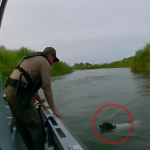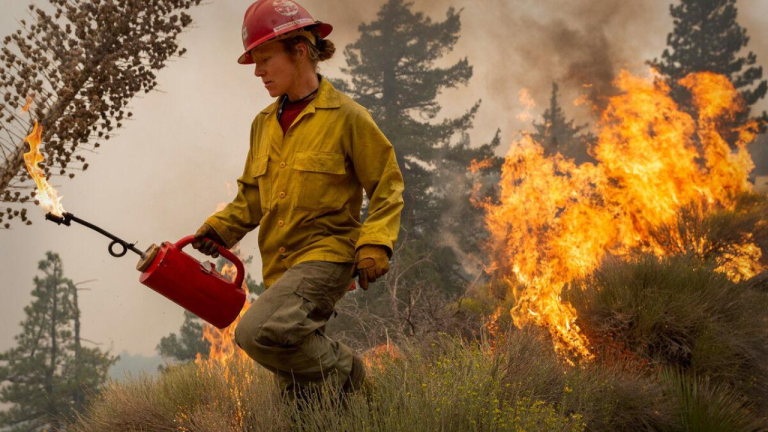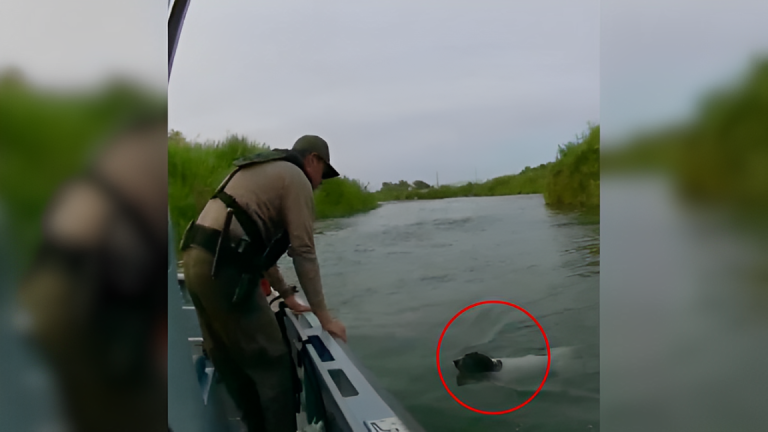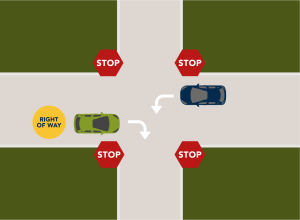Understanding the right of way laws in Iowa is essential for every driver, pedestrian, and cyclist to ensure safety on the road. These laws help determine who has the right to go first in various situations, helping to avoid confusion and accidents. Whether you’re navigating busy city streets or driving on quieter rural roads, knowing the right of way rules can make your driving experience safer and smoother. In this article, we’ll take an in-depth look at Iowa’s right of way laws, the situations where these rules apply, and practical advice on how to follow them.
What Does Right of Way Mean?
The concept of right of way refers to the traffic rules that specify who has priority in different situations. The goal is to ensure traffic flows smoothly and safely by clarifying who must stop, yield, or go first. Understanding who has the right of way can help prevent accidents and reduce confusion, especially at intersections or busy streets.
Right of way rules are not just about following the law; they also involve being courteous and responsible behind the wheel. In some cases, it may not be legally required to yield, but doing so can prevent accidents and keep everyone safe.
Common Right of Way Scenarios in Iowa
Let’s take a closer look at the most common right of way situations you may face while driving in Iowa:
1. At Intersections Without Traffic Signals or Signs
In Iowa, when you approach an intersection without any traffic control signs like a stop sign or traffic light, the general rule is to yield to traffic from the right. This is known as the right-hand rule.
- Example: If two cars arrive at an intersection at the same time, the vehicle on the right has the right of way.
- If you are the driver on the left, you must yield to the car on the right.
This simple rule helps prevent confusion at intersections that aren’t controlled by signals or signs.
2. At Stop Signs
At intersections controlled by stop signs, drivers must come to a full stop and yield to traffic on the road. Iowa law requires you to stop at the stop line, the crosswalk, or the intersection itself.
- If you arrive at the stop sign at the same time as another vehicle, the vehicle on the right has the right of way.
- If you are making a left turn, you must yield to oncoming traffic and wait until it is safe to turn.
Ignoring stop signs can result in fines and penalties, and more importantly, it can lead to accidents.
3. At Traffic Signals
Traffic signals (red, yellow, green lights) regulate the flow of traffic at intersections. In Iowa, you must follow the traffic signal unless it is not working.
- Green light: You may go but must yield to pedestrians or cyclists in the intersection.
- Yellow light: If you are too close to the intersection to stop safely, proceed with caution. Otherwise, stop.
- Red light: Always stop. If turning right or left, yield to any pedestrians or traffic that has the right of way.
Even if you have a green light, be alert and yield when necessary to avoid accidents.
4. Pedestrian Crosswalks
Pedestrians in Iowa have the right of way at crosswalks, whether marked or unmarked. As a driver, you must always yield to pedestrians who are crossing or about to cross the street.
- Example: If a pedestrian is crossing at a crosswalk, you must stop and let them cross safely before proceeding.
- Important note: If a pedestrian is waiting to cross at a marked crosswalk, you must yield to them, even if there is no traffic signal.
Failing to yield to pedestrians can lead to serious accidents and legal consequences.
5. School Buses
Iowa has strict rules about school buses. When a school bus has its red lights flashing and its stop arm extended, all vehicles must stop. This rule applies whether you are traveling in the same direction as the bus or in the opposite direction.
- You must stop at least 20 feet away from the bus.
- Do not pass a bus with flashing lights, even if you are on the other side of a divided road.
This law is designed to protect children as they get on and off the bus. Violating this law can result in fines, penalties, and points on your driving record.
6. Emergency Vehicles
When emergency vehicles (police, fire trucks, ambulances) have their sirens and flashing lights on, drivers in Iowa must yield the right of way.
- If you are driving in the same direction as an emergency vehicle, you should pull over to the right side of the road and stop.
- If you are traveling in the opposite direction, you should still pull over and stop, as long as it’s safe to do so.
- Never block an intersection when an emergency vehicle is approaching.
This rule is critical to help emergency responders reach their destinations quickly and safely.
7. Merging onto Highways
When entering a highway, drivers already on the highway have the right of way. As a driver merging onto the highway, it’s your responsibility to adjust your speed to match the flow of traffic.
- You should yield to vehicles already on the highway and merge when there is a safe gap.
- Use your turn signal to let other drivers know you are merging.
Proper merging is essential for avoiding accidents and maintaining traffic flow.
8. Roundabouts
In Iowa, roundabouts are becoming more common, and they are designed to reduce the number of accidents at intersections. When entering a roundabout, you must yield to traffic already inside the roundabout.
- Pedestrians may also be crossing at the exits of roundabouts, so be alert and yield to them.
- Once inside the roundabout, you have the right of way, but you must still watch out for other drivers, cyclists, and pedestrians.
Roundabouts are safer than traditional intersections because they reduce the likelihood of head-on collisions.
9. Cyclists and Bicyclists
In Iowa, cyclists have the same rights and responsibilities as motor vehicles on the road. Drivers must yield to cyclists when necessary.
- Always yield to cyclists if you are turning or changing lanes.
- When passing a cyclist, maintain a safe distance of at least 3 feet.
Since cyclists are more vulnerable on the road than drivers, it’s important to share the road responsibly and safely.
Key Tips for Drivers in Iowa
- Always Yield When Required: Yielding the right of way, even when it’s not required by law, can help prevent accidents and ensure everyone’s safety.
- Come to a Complete Stop at Stop Signs: It’s essential to stop completely at stop signs and look for other vehicles, pedestrians, or cyclists before proceeding.
- Be Mindful of Pedestrians: Pedestrians always have the right of way at crosswalks, and failing to yield could result in serious consequences.
- Be Careful Around School Buses: Always stop when a school bus has its red lights flashing. This is a critical rule for protecting children.
- Watch for Emergency Vehicles: Always pull over to the right side of the road and stop when an emergency vehicle approaches with flashing lights and sirens.
- Use Roundabouts Safely: Yield to traffic already inside the roundabout and pay attention to pedestrians.
- Share the Road with Cyclists: Maintain a safe distance when passing cyclists and be aware of their presence.
Conclusion
Understanding and following Iowa’s right of way laws is crucial for every driver to ensure the safety of themselves, passengers, and others on the road. By following these rules, drivers can avoid accidents, reduce confusion, and make the road a safer place for everyone. Remember that yielding the right of way isn’t just about following the law—it’s about being courteous, responsible, and looking out for others on the road. Stay alert, stay safe, and always drive responsibly.
Disclaimer – Our editorial team has thoroughly fact-checked this article to ensure its accuracy and eliminate any potential misinformation. We are dedicated to upholding the highest standards of integrity in our content.

























+ There are no comments
Add yours